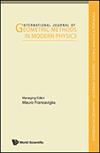f(R, T)理论中Bianchi I型模型的晚时间各向同性宇宙学
IF 2.1
3区 物理与天体物理
Q2 PHYSICS, MATHEMATICAL
International Journal of Geometric Methods in Modern Physics
Pub Date : 2023-10-20
DOI:10.1142/s0219887824500609
引用次数: 0
摘要
在本研究中,我们在[公式:见文本]引力理论的框架中考虑Bianchi I型模型。我们借助一个各向异性参数来求解场方程,该参数可以显示宇宙过去的各向异性行为及其对今天各向同性的近似。对于两种不同的模型,我们通过分析一些宇宙学参数来考察宇宙膨胀中的相变。我们将马尔可夫链蒙特卡罗分析和贝叶斯技术应用于Cosmic Chronometer, Phanteon和BAO数据集,并考虑到观测参数的约束。我们证明,我们得到的两种不同的模型解释了宇宙膨胀中从减速阶段到加速阶段的转变,这些模型的行为与今天的CDM模型一致,模型预测的宇宙学参数的当前值与观测结果表明的值是一致的,我们得出结论,在这种一致性上,模型i比模型ii更一致。本文章由计算机程序翻译,如有差异,请以英文原文为准。
Cosmology with the late time isotropy of the Bianchi type I model in f(R, T) theory
In this study, we consider the Bianchi type I model in the framework of [Formula: see text] gravity theory. We solve the field equations with the help of an anisotropy parameter that can show the anisotropic behavior of the universe in the past and its approximation to isotropy today. For two different models, we examine the phase transition in the expansion of the universe by analyzing some cosmologic parameters. We conduct our investigation by applying the Markov Chain Monte-Carlo analysis and Bayesian technique to the Cosmic Chronometer, Phanteon and BAO datasets, taking into account the observational constraints on the parameters. We show that the two different models we obtained explain the transition from the slowing phase to the accelerating phase in the expansion of the universe, that the models behave in harmony with the [Formula: see text]CDM model today, and that the current values of the cosmological parameters predicted by the models are compatible with the values indicated by the observations and we conclude that the Model-I is more compatible than the Model-II in this conformity.
求助全文
通过发布文献求助,成功后即可免费获取论文全文。
去求助
来源期刊
CiteScore
3.40
自引率
22.20%
发文量
274
审稿时长
6 months
期刊介绍:
This journal publishes short communications, research and review articles devoted to all applications of geometric methods (including commutative and non-commutative Differential Geometry, Riemannian Geometry, Finsler Geometry, Complex Geometry, Lie Groups and Lie Algebras, Bundle Theory, Homology an Cohomology, Algebraic Geometry, Global Analysis, Category Theory, Operator Algebra and Topology) in all fields of Mathematical and Theoretical Physics, including in particular: Classical Mechanics (Lagrangian, Hamiltonian, Poisson formulations); Quantum Mechanics (also semi-classical approximations); Hamiltonian Systems of ODE''s and PDE''s and Integrability; Variational Structures of Physics and Conservation Laws; Thermodynamics of Systems and Continua (also Quantum Thermodynamics and Statistical Physics); General Relativity and other Geometric Theories of Gravitation; geometric models for Particle Physics; Supergravity and Supersymmetric Field Theories; Classical and Quantum Field Theory (also quantization over curved backgrounds); Gauge Theories; Topological Field Theories; Strings, Branes and Extended Objects Theory; Holography; Quantum Gravity, Loop Quantum Gravity and Quantum Cosmology; applications of Quantum Groups; Quantum Computation; Control Theory; Geometry of Chaos.

 求助内容:
求助内容: 应助结果提醒方式:
应助结果提醒方式:


